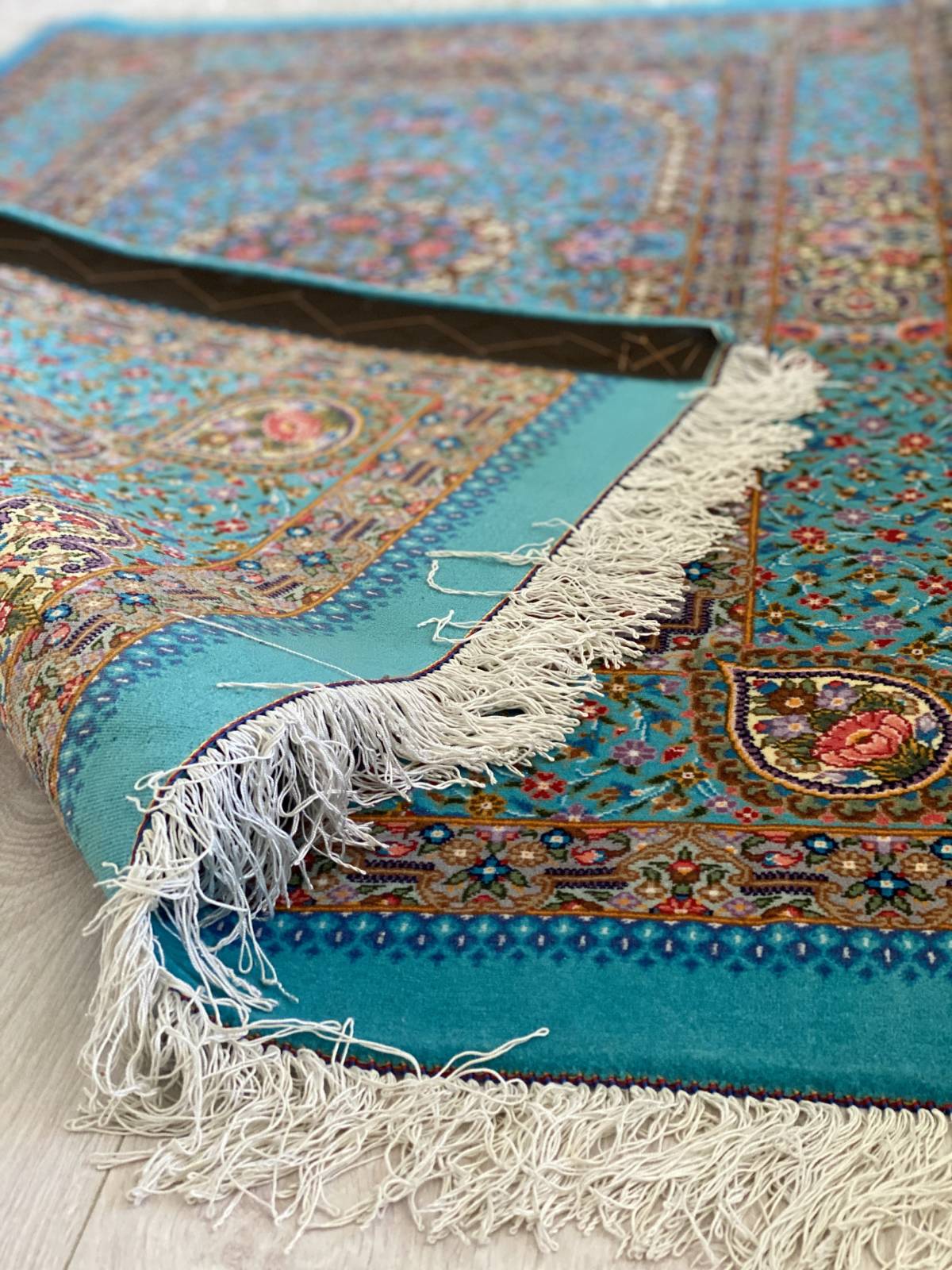
Qom carpet
size: 100 x 155 cmthickness: 1 cm
weight: 5 kg
Iran is a country of art but exploring Persian carpets on its own is a magnificent journey. Almost every city in Iran has its own unique patterned carpets, material and colour. Delving into the world of carpets reveals history and culture passed down for thousands of years and transported across nations. In the unique carpet world the simple patterns become mysterious and meaningful, flowers, animal figures and simple lines are imbued with deep symbolism, and colors and shape hold deep concept.
Below you will find some new carpets, purchased during my travels back to my beloved Iran and for sale in Holland. For more information or pictures please do not hesitate contacting me.